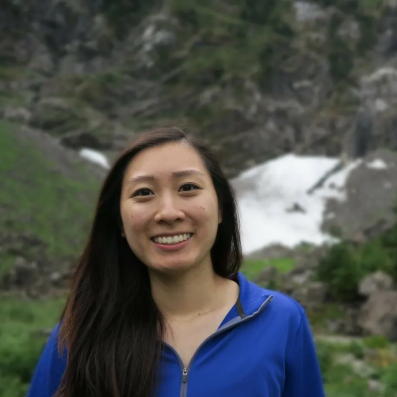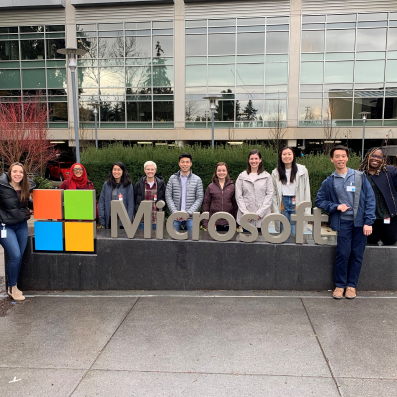
While working in healthcare administration, April Hoang started noticing deficiencies in both the patient experience and the employee experience at the clinics where she worked. Think not very user-friendly software and convoluted processes. Some clinics used scheduling software that was so complicated the staff had to train for three months to learn how to use it. Others continued to rely on paper forms and filing systems instead of digital databases. Hoang was thinking like a UX designer before she knew what UX design was.
After completing Springboard’s UX Design Career Track in August 2019, she joined Microsoft’s Leap apprenticeship program. Thanks to a referral from her Leap instructor, she landed her dream job at Microsoft two months later. She now works within the UX identity team for Azure, Microsoft’s cloud computing platform.

Healthcare is in the process of trying to improve the overall user experience, but I think their main focus is on patient care. In my most recent role, there were so many issues with the software that we used to schedule patients. We actually had two different scheduling systems just to schedule one appointment. That caused so many issues because everyone gets mad at you: the patient, the radiologist, the doctors.
Once I decided not to continue with healthcare administration, I searched for new career paths and stumbled across UX design—and that’s when everything clicked.
I researched a bunch of different bootcamps and I knew I wanted to get a good foundation in UX. Springboard had the best of both worlds where I could learn at my own pace but also work full-time and pay the bills.
"I researched a bunch of different bootcamps and I knew I wanted to get a good foundation in UX. Springboard had the best of both worlds where I could learn at my own pace but also work full-time and pay the bills."
Around the time when I was thinking about my career change, my boyfriend landed a job in Seattle as a software engineer. There’s a big UX design community here and Seattle is a major tech hub, so I decided to start pursuing UX design.
While I continued to work in healthcare I started going to meetups and talking to designers in the field, which was super helpful.
Networking is a scary thing, but if you focus on building connections with people in the design community and reaching out to people to see if they’re willing to help you with portfolio feedback—doing things like that is better than sending cold emails. Continue refining your messaging and make sure that you’re not asking for a job but trying to understand the other person and see their side of the story.
My mentor just blew me away with the way he presented himself and how much he helped me. I think he really challenged me and helped me build my confidence when it came to doing presentations in front of stakeholders.
I love collaborating with product managers, engineers, and designers, but as a designer, you get put in a lot of meetings and that can be draining.
The part that I do really love is the community. As a designer, you get feedback that can be very harsh because people have to think about technical constraints and feasibility, but everyone in the community is there to help you. They want to see you learn and grow.
I designed a career-related app called Find Your Path to help people who are switching careers reach out to experts in their field. It was supposed to make networking a little easier and more personable and make sure both sides are comfortable with doing it.
I think the most important skill that I’m still working on myself is my soft skills: communicating my design decisions with other designers, product managers, and engineers.

There was definitely an adjustment period. I had worked remotely before for contract positions, but this was different. I had to make sure to keep up communication with my team and ask questions when I’m struggling or having trouble.
The job search is a struggle, especially right now during the pandemic. One thing that helped me the most was continuing to reach out to the people around me, whether it’s people in the design community or family and friends, and reminding myself why I chose this career path.
I didn’t focus so much on getting a job right away; I focused more on building relationships with people, building my portfolio, and doing other hobbies to make sure I didn’t go crazy. I think all of that helped me to land the job that I did.
Here at Springboard, not only do we pride ourselves on our students’ successes, but we genuinely believe that their dreams are what make up the foundation of our mission. Our alumni dream big—and they make big moves in stride. So we’re shining a light onto some of our favorite alumni stories: their journeys tell stories of accomplishment, grit, and determination against all kinds of odds. Find more inspiring Springboard student success stories here.









